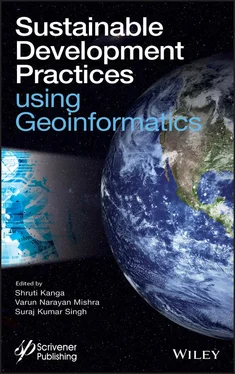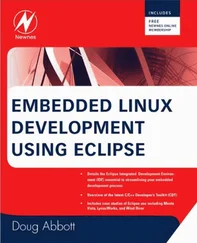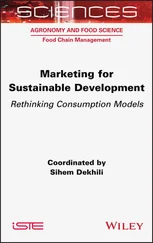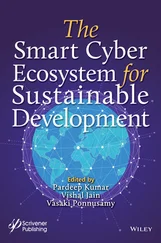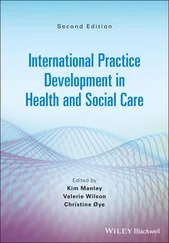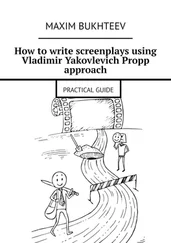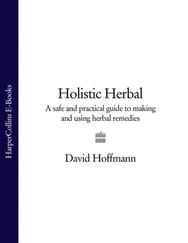8 Chapter 8Figure 8.1 Key map of Western Ghats India.Figure 8.2 Thematic layer consider in this study. (a) Elevation data; (b) Slope ...Figure 8.3 Western Ghats landslide vulnerability zonation map.
9 Chapter 9Figure 9.1 Schematic diagram showing the underground mining subsidence, pre- and...Figure 9.2 Subsidence basin observed in an agricultural field at the Hanwang coa...Figure 9.3 Subsidence basin observed in an agricultural field in the Witbank are...Figure 9.4 Tension cracks associated with subsidence basin formation developed i...Figure 9.5 Tension cracks representing secondary features of surface subsidence ...
10 Chapter 10Figure 10.1 Study area map.Figure 10.2 The process of delineation of drainage network and stream orders.Figure 10.3 Aspect of Gomti River Basin.Figure 10.4 Slope of Gomti River Basin.Figure 10.5 Stream order of Gomti River Basin.Figure 10.6 Drainage density of Gomti River Basin
11 Chapter 11Figure 11.1 Map study area, BIT Mesra, Ranchi District, Jharkhand State, India.Figure 11.2 Intake reservoir of Hostel 9.
12 Chapter 12Figure 12.1 Location map of the study area.Figure 12.2 Flow chart showing methodology.Figure 12.3 LULC map of October 2005.Figure 12.4 LULC map of October 2016.Figure 12.5 LULC change map of October 2005 to October 2016.Figure 12.6 LULC map (February 2006).Figure 12.7 LULC map (February 2017).Figure 12.8 LULC change map of pre-monsoon (February 2006 to February 2017).
13 Chapter 13Figure 13.1 IPCC framework for assessing vulnerability. Source: IPCC framework r...
14 Chapter 14Figure 14.1 Study area.Figure 14.2 Slope map.Figure 14.3 Ground water depth map.Figure 14.4 Land use/land cover map.Figure 14.5 Geology map.Figure 14.6 Soil map.Figure 14.7 Shows methodology flow chart.Figure 14.8 Suitable site for sustainable ground water assessment.
15 Chapter 15Figure 15.1 Showing study area map.Figure 15.2 Land use and land cover map (1988).Figure 15.3 Land use/land cover map (1998).Figure 15.4 Land use/land cover map (2008).Figure 15.5 Land use/land cover map (2018).
16 Chapter 16Figure 16.1 Houses damaged in Puri town near the sea beach.Figure 16.2 Affected districts due to cyclone Fani.
17 Chapter 17Figure 17.1 Gujarat Flood Hazard Risk Zonation: Settlement-wise Flood Frequency....Figure 17.2 Flood Hazard Map Gujarat (BMTPC, 2019).
18 Chapter 18Figure 18.1 Location map. Prepared by authors using toposheets, Kerala 1:50,000....Figure 18.2 District wise distribution of rice mills in Kerala. Prepared by the ...Figure 18.3 Taluk wise distribution of rice mills in Ernakulam (2015). Prepared ...Figure 18.4 Locations of rice mills. Prepared by the Authors on the basis of GPS...Figure 18.5 Effluent collected points in Okkal Panchayath (field survey).
19 Chapter 19Figure 19.1 Wainganga study area.Figure 19.2 Physiographical regions.Figure 19.3 Contour map.Figure 19.4 Digital Elevation Models (DEM).Figure 19.5 Wainganga River geological map.Figure 19.6 Wainganga River sub-basin.Figure 19.7 Land use map of Wainganga sub-basin.
1 Chapter 1 Table 1.1 List of datasets used for the study. Table 1.2 Area statistics of LULC in Barasat municipality.
2 Chapter 2 Table 2.1 Area statistics of various LU/LC classes over study area. Table 2.2 Area statistics of socio-economic vulnerability index in study area. Table 2.3 Area statistics of geo-environmental hazard index in study area. Table 2.4 Area statistics of coal mining risk index in study area.
3 Chapter 3Table 3.1 Specification of bistatic scatterometer system.Table 3.2 Coefficient of determination (R 2) between P (dB) and soil moisture con...
4 Chapter 4Table 4.1 Morphometric parameter calculated in the Tapi Basin.Table 4.2 Basin Relief (R).Table 4.3 Drainage density of all streams.Table 4.4 Stream frequency of the study area.Table 4.5 Form factor, circulatory ratio, and elongation ratio of basin area.Table 4.6 Results of morphometric analysis Tapi River Basin.
5 Chapter 5Table 5.1 Specifications of FTS (source: GOSAT Pamphlet 7th edition) [4].Table 5.2 Specifications of CAI (source: GOSAT Pamphlet 7th edition) [4].Table 5.3 List of GOSAT data products distributed/to be distributed from GOSAT D...
6 Chapter 6Table 6.1 Statistics of LU/LC of Jangal Aurahi village of Gorakhpur district.Table 6.2 Statistics of LU/LC of Jangal Aurahi village of Gorakhpur district.
7 Chapter 7Table 7.1 Materials and data sources of the study area.Table 7.2 Specific suitability level per factor for the potato crop. Sources: Si...Table 7.3 Seven-point weighing scale for pairwise comparison.Table 7.4 Pairwise comparison matrix of the selected criteria in AHP.Table 7.5 Resulting overall areas for individual suitability classes of potato c...
8 Chapter 8Table 8.1 Sub-class weightage index.Table 8.2 Area of different vulnerability zones.
9 Chapter 10Table 10.1 Morphometric parameters, their derivations, and references.Table 10.2 Stream orders and their characteristics.Table 10.3 Numeric detail of areal morphometric parameters.Table 10.4 Numeric detail of relief morphometric parameter.
10 Chapter 11Table 11.1 Bore well location of BIT Mesra. (Source: Water Supply Department BIT...Table 11.2 Water withdrawal from Jumar River. (Source: Water Supply Department B...Table 11.3 Water requirement.Table 11.4 Water demand in campus facilities.Table 11.5 Average water flow rate.Table 11.6 Water availability based on OHT of Hostel 9.Table 11.7 Water supply and demand gaps at Hostel 8.
11 Chapter 12Table 12.1 Characteristics of Landsat satellite imageries.Table 12.2 Eleven-year LULC change statistics during October 2005 and October 20...Table 12.3 Eleven-year LULC change in class-wise statistics during October 2005 ...Table 12.4 Eleven-year LULC change statistics during February 2006 and February ...Table 12.5 Eleven-year LULC change in class-wise statistics during February 2006...
12 Chapter 13Table 13.1 Major components and sub-components comprising Livelihood Vulnerabili...
13 Chapter 14Table 14.1 Pairwise comparison matrix.Table 14.2 Saaty’s ratio index for different values of n.Table 14.3 Weights of the thematic maps of the potential groundwater.
14 Chapter 15Table 15.1 Area of LULC classes in km 2.Table 15.2 LULC transition matrix (1988–1998).Table 15.3 LULC Transition matrix (1998–2008).Table 15.4 LULC transition matrix (2008–2018).Table 15.5 Theoretical error matrix of the change detection (1988–2018).
15 Chapter 16Table 16.1 Damage caused to houses due to cyclone Fani in Odisha. Source: Odisha...Table 16.2 Assessment of damage caused to housing due to Fani. Source: Odisha Di...
16 Chapter 18Table 18.1 District wise number of modern rice mills in Kerala (2016). Source: R...Table 18.2 Taluk wise distribution of rice mills in Ernakulam (2015). Source: RM...Table 18.3 Figure showing requirement of water and the amount of effluent genera...Table 18.4 Anticipatory figure showing requirement of water and amount of efflue...Table 18.5 Physio-chemical analysis of rice mill effluent from second model clus...
17 Chapter 19Table 19.1 Wainganga River Basin watershed area.Table 19.2 The land use pattern of the Wainganga sub-basin.Table 19.3 Inflows.Table 19.4 Average observed (monsoon) runoff at CWC sites in the Wainganga River...
1 Cover
2 Table of Contents
3 Title page
4 Copyright
5 Preface
6 Acknowledgement
7 Begin Reading
8 Index
9 Also of Interest
10 End User License Agreement
1 v
2 iii
3 iv
4 xv
5 xvi
6 xvii
7 xviii
8 xix
9 xx
10 xxi
11 1
12 2
13 3
14 4
15 5
16 6
17 7
18 8
19 9
20 10
21 11
22 12
23 13
24 14
Читать дальше
